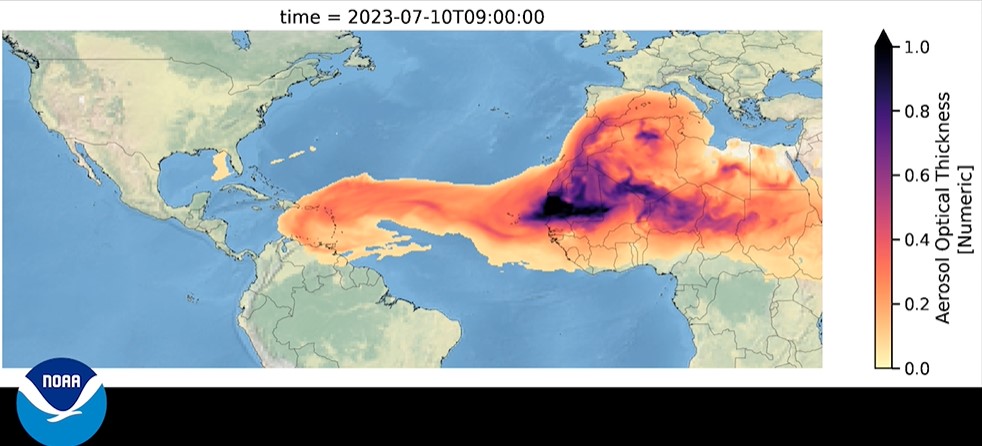ARL Weekly News – July 7, 2023
| Recent Events |
International Conference on Aeolian Research
Barry Baker is attending the International Conference on Aeolian Research in Las Cruces, USA, held July 10 – 14, 2023. Barry has a presentation on the NOAA FENGSHA Dust Emission Model in RRFS-SD, and a poster on the Aerosol Component in the latest prototype of the Unified Forecast System. Daniel Tong is leading a session on Anthropogenic Interactions.
International Day of Combating Sand and Dust Storms
July 12 has been designated as the inaugural International Day of Combating Sand and Dust Storms. The World Meteorological Organization is supporting this event to draw attention to the significant impacts on the environment, socio-economic well-being and health. In June, The United Nations General Assembly adopted a resolution establishing 12 July as the annual event in order to increase global and regional cooperation to manage and mitigate the effects of sand and dust storms. Sand and dust storms are issues of international concern, negatively affecting the achievement of 11 of the 17 Sustainable Development Goals.
Saharan Air Layer moves across the Atlantic
The WMO announcement on the inaugural International Day of Combating Sand and Dust Storms coincides with a major intrusion of Saharan dust into the Mediterranean and across the Atlantic to the Caribbean. Barry Baker has modeled the movement of the dust storm as it approaches Florida. The dust storm is welcome news for those seeking a reduction in the record sea surface temperatures that have warmed Atlantic waters recently.
CNBC Media Mention
Howard Diamond provided fact checking and climate background information to CNBC for a story on Antarctic sea ice: Antarctic sea ice has been at record low levels for months — here’s what that means
| Publications |
Published: Identifying biases in near- and sub-surface meteorological fields in the High-Resolution Rapid Refresh (HRRR) weather prediction model.
Lee, T. R., R. D. Leeper, T. Wilson, H. Diamond, T. P. Meyers, and D. D. Turner, 2023: Identifying biases in near- and sub-surface meteorological fields in the High-Resolution Rapid Refresh (HRRR) weather prediction model. Weather and Forecasting, 38(6), 879-900, https://doi.org/10.1175/WAF-D-22-0213.1.
Abstract: The ability of high-resolution mesoscale models to simulate near-surface and subsurface meteorological processes is critical for representing land–atmosphere feedback processes. The High-Resolution Rapid Refresh (HRRR) model is a 3-km numerical weather prediction model that has been used operationally since 2014. In this study, we evaluated the HRRR over the contiguous United States from 1 January 2021 to 31 December 2021. We compared the 1-, 3-, 6-, 12-, 18-, 24-, 30-, and 48-h forecasts against observations of air and surface temperature, shortwave radiation, and soil temperature and moisture from the 114 stations of the U.S. Climate Reference Network (USCRN) and evaluated the HRRR’s performance for different geographic regions and land cover types. We found that the HRRR well simulated air and surface temperatures, but underestimated soil temperatures when temperatures were subfreezing. The HRRR had the largest overestimates in shortwave radiation under cloudy skies, and there was a positive relationship between the shortwave radiation mean bias error (MBE) and air temperature MBE that was stronger in summer than winter. Additionally, the HRRR underestimated soil moisture when the values exceeded about 0.2 m3 m−3, but overestimated soil moisture when measurements were below this value. Consequently, the HRRR exhibited a positive soil moisture MBE over the drier areas of the western United States and a negative MBE over the eastern United States. Although caution is needed when applying conclusions regarding HRRR’s biases to locations with subgrid-scale land cover variations, general knowledge of HRRR’s biases will help guide improvements to land surface models used in high-resolution weather forecasting models.


